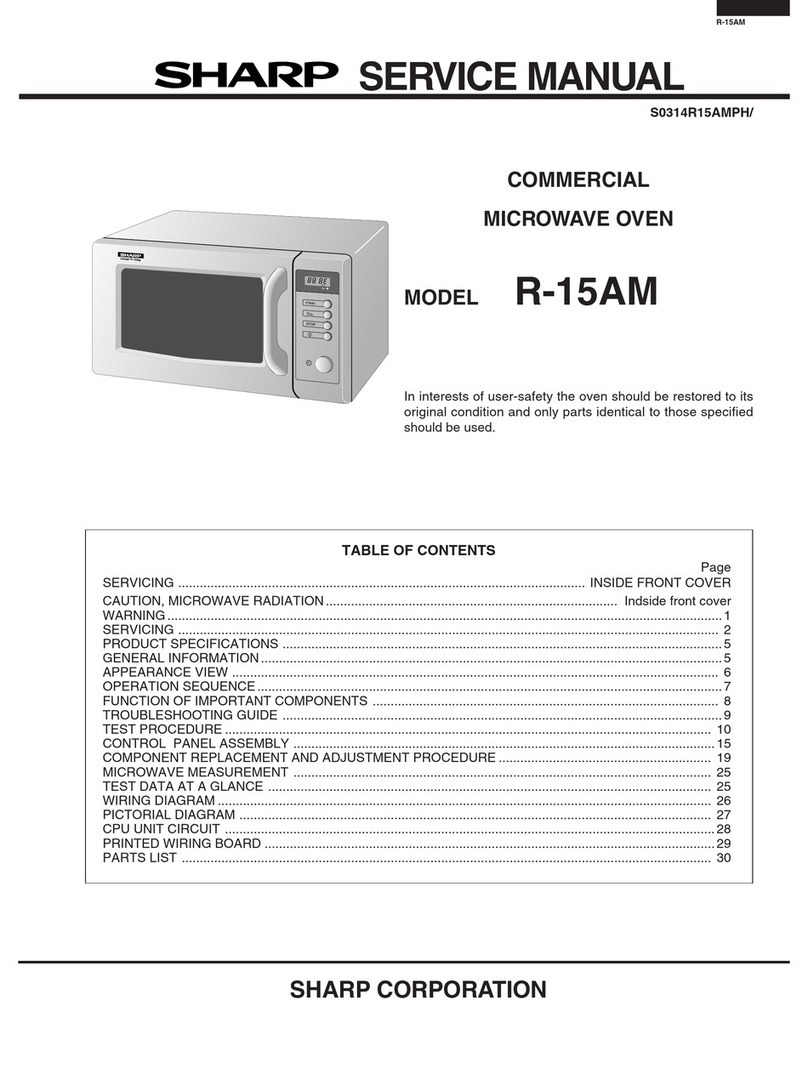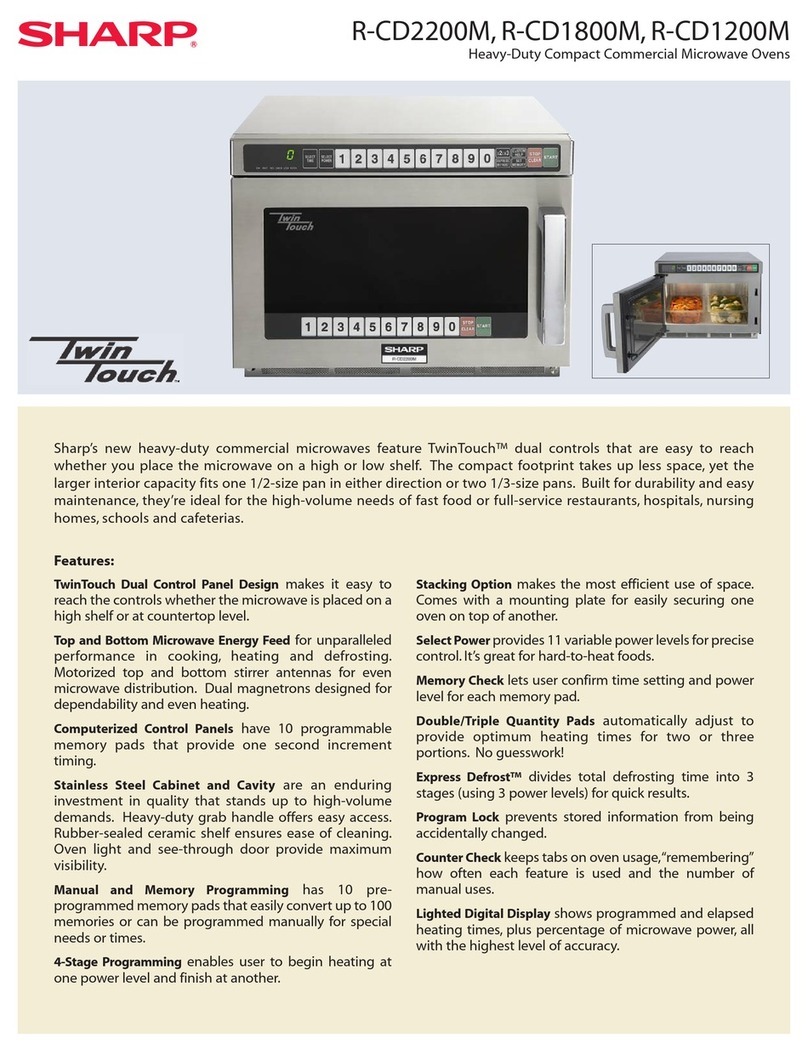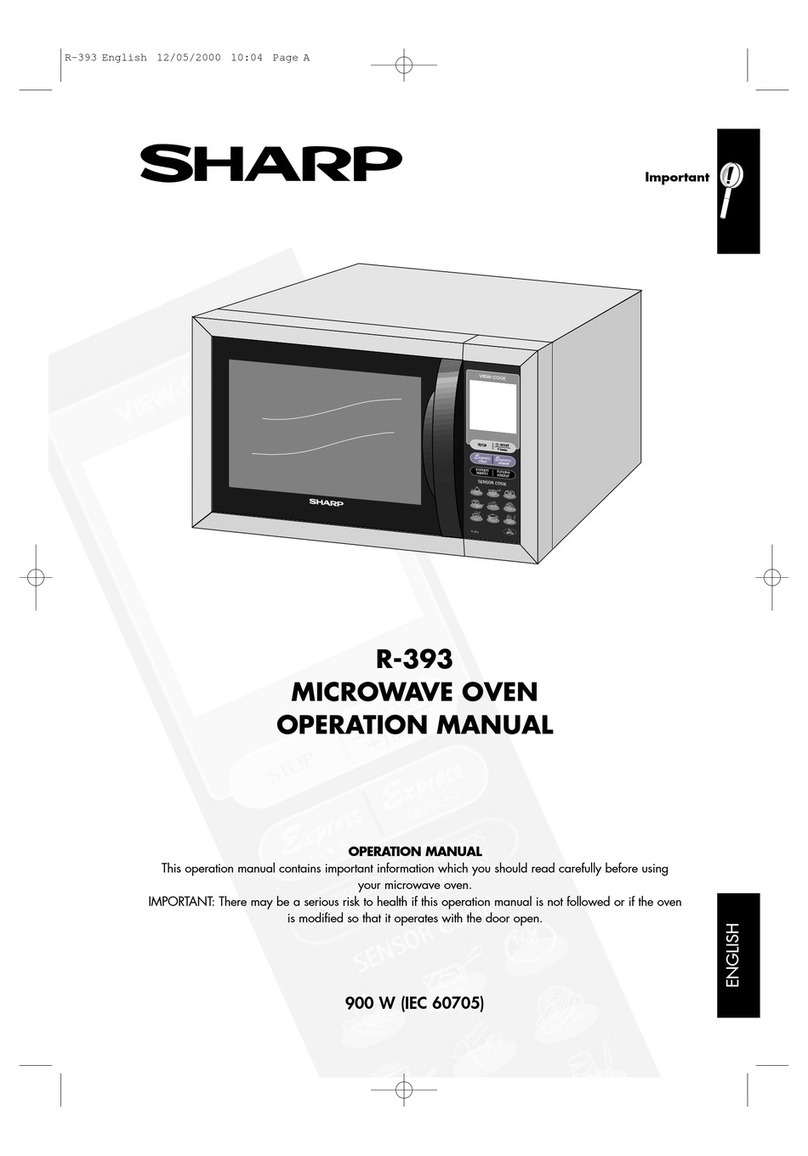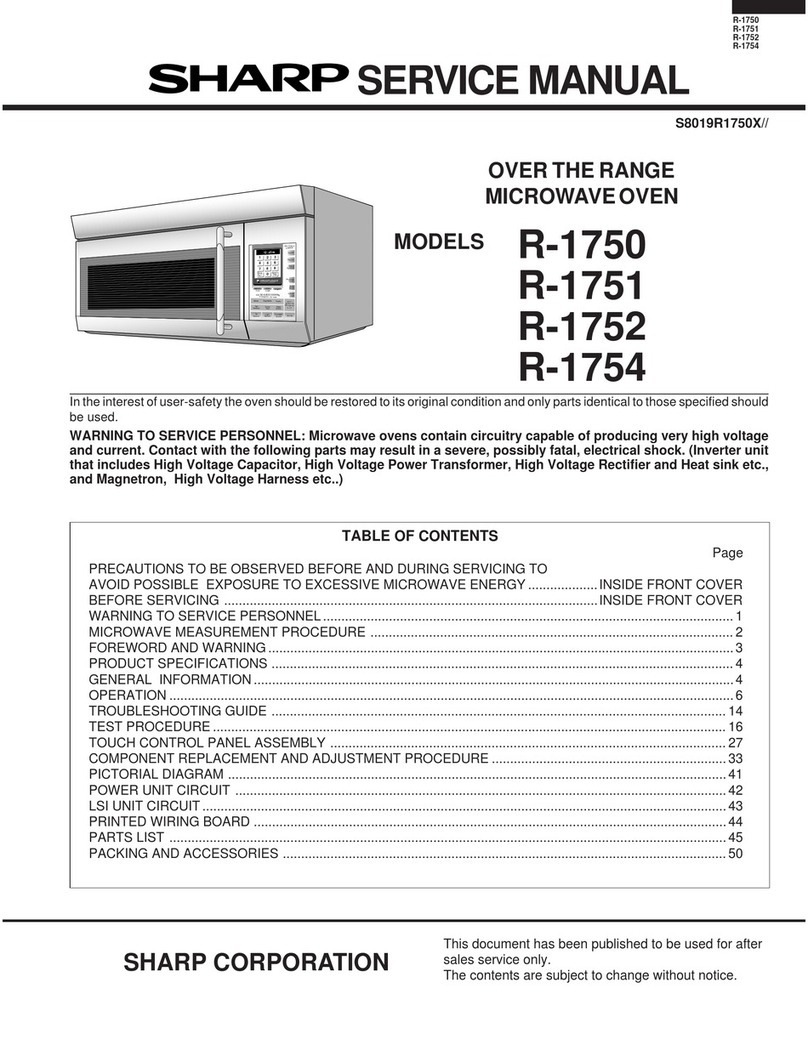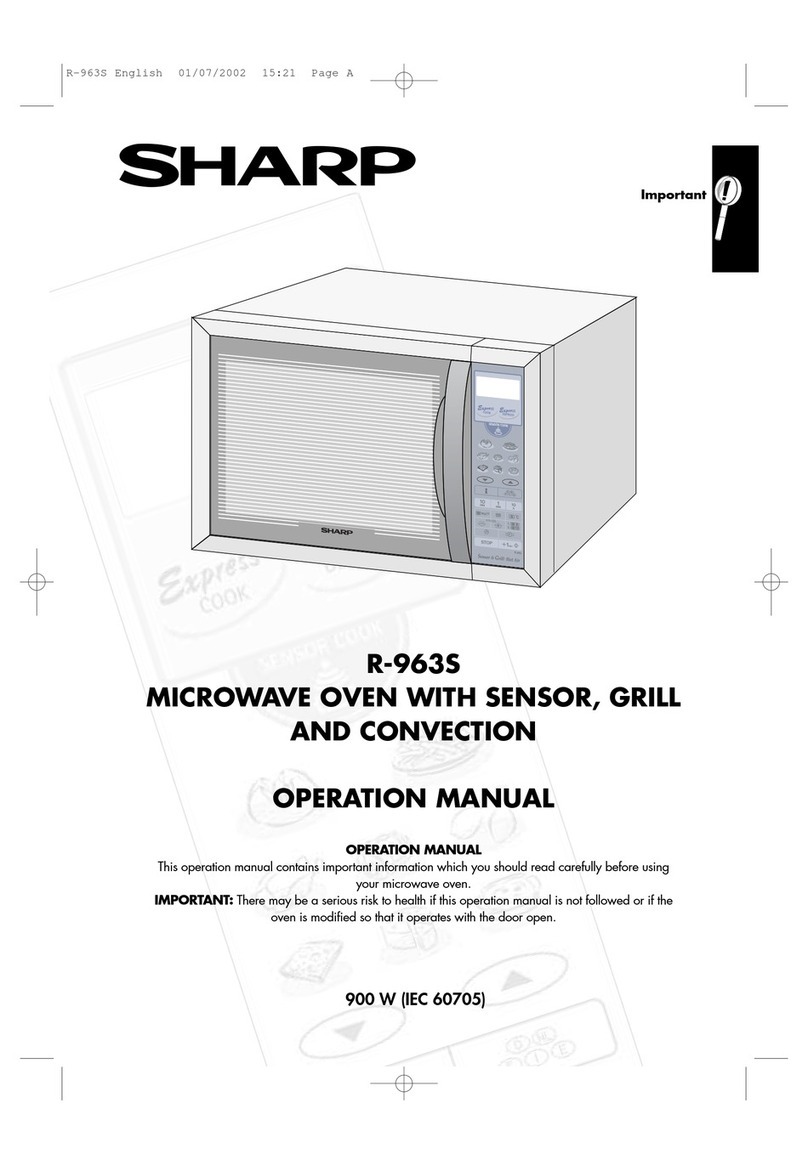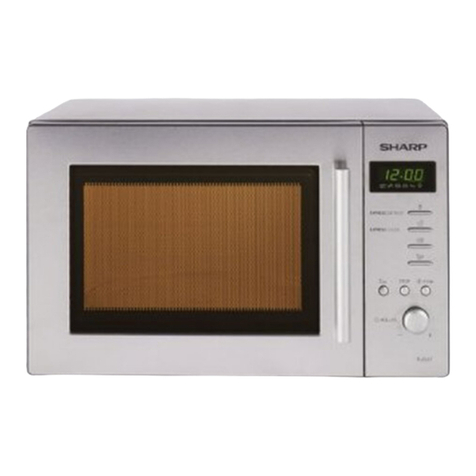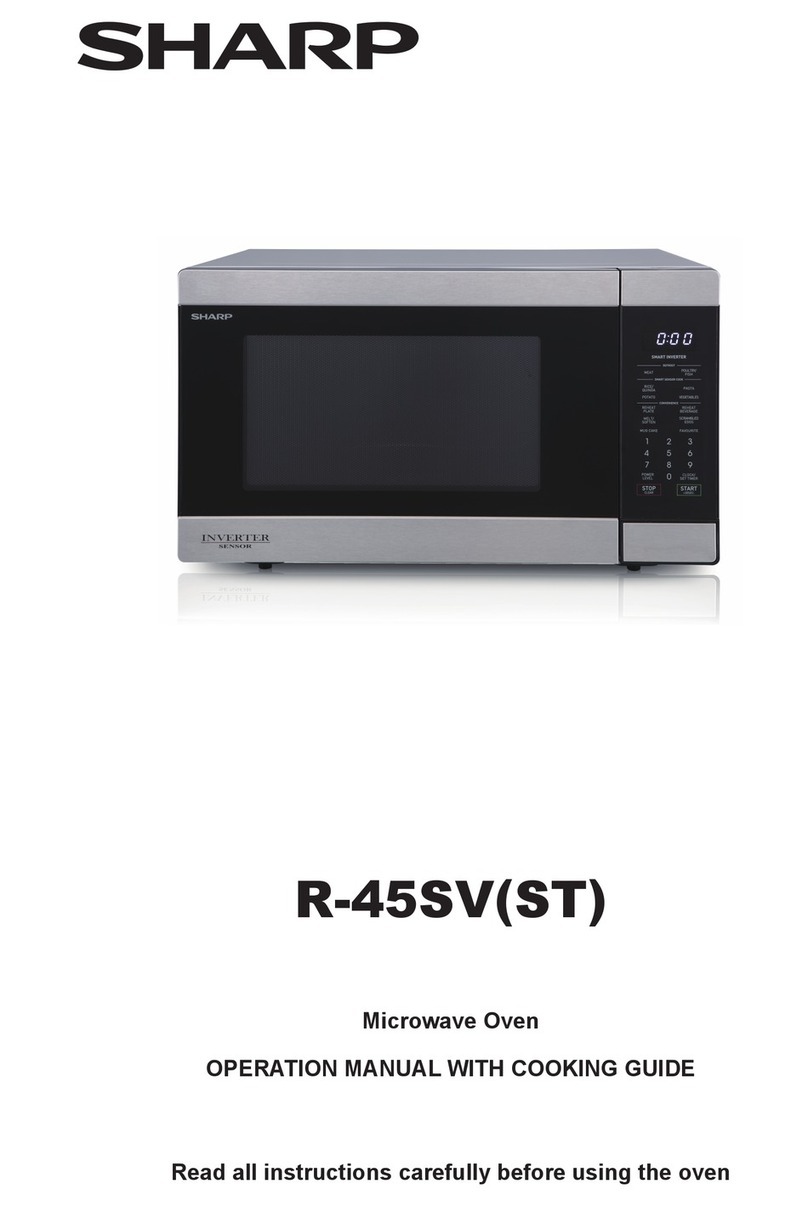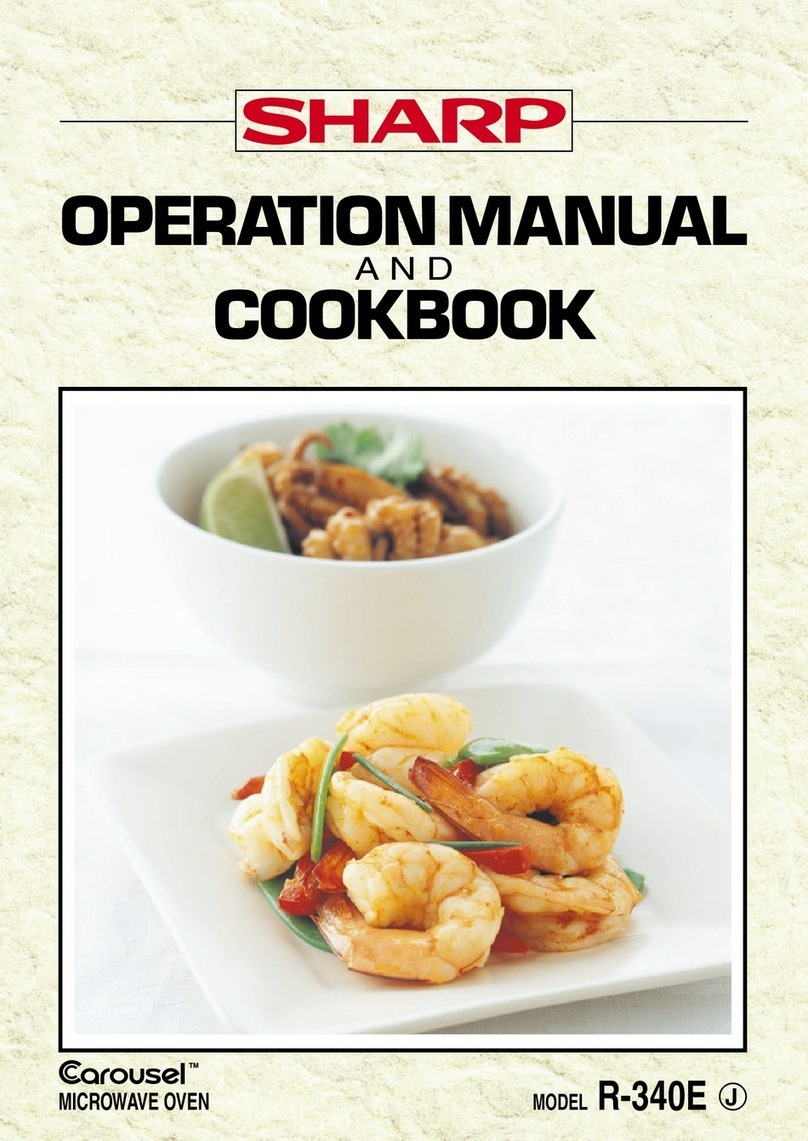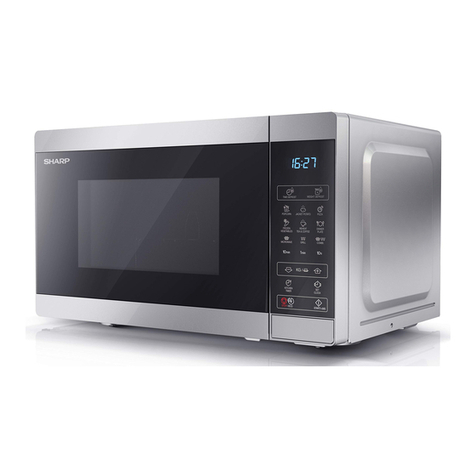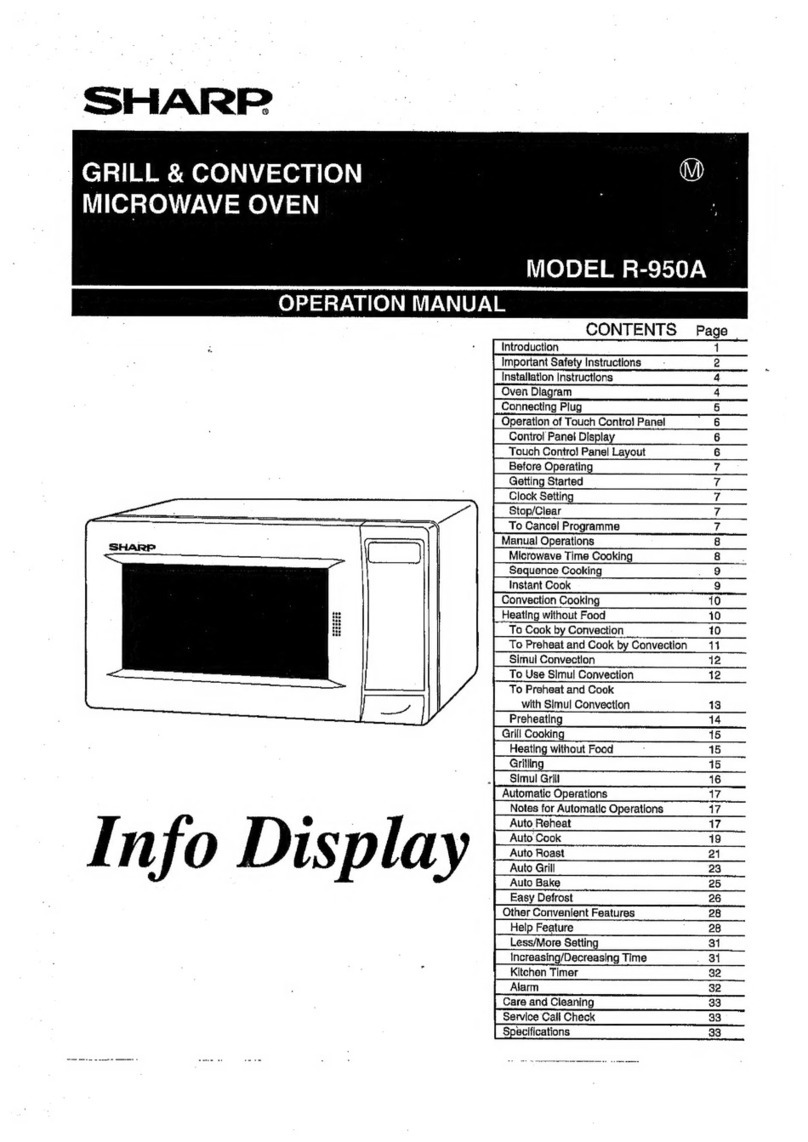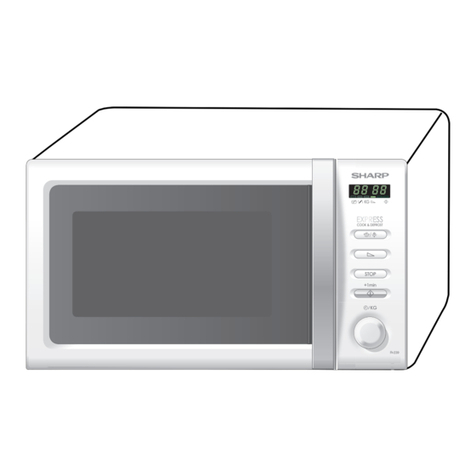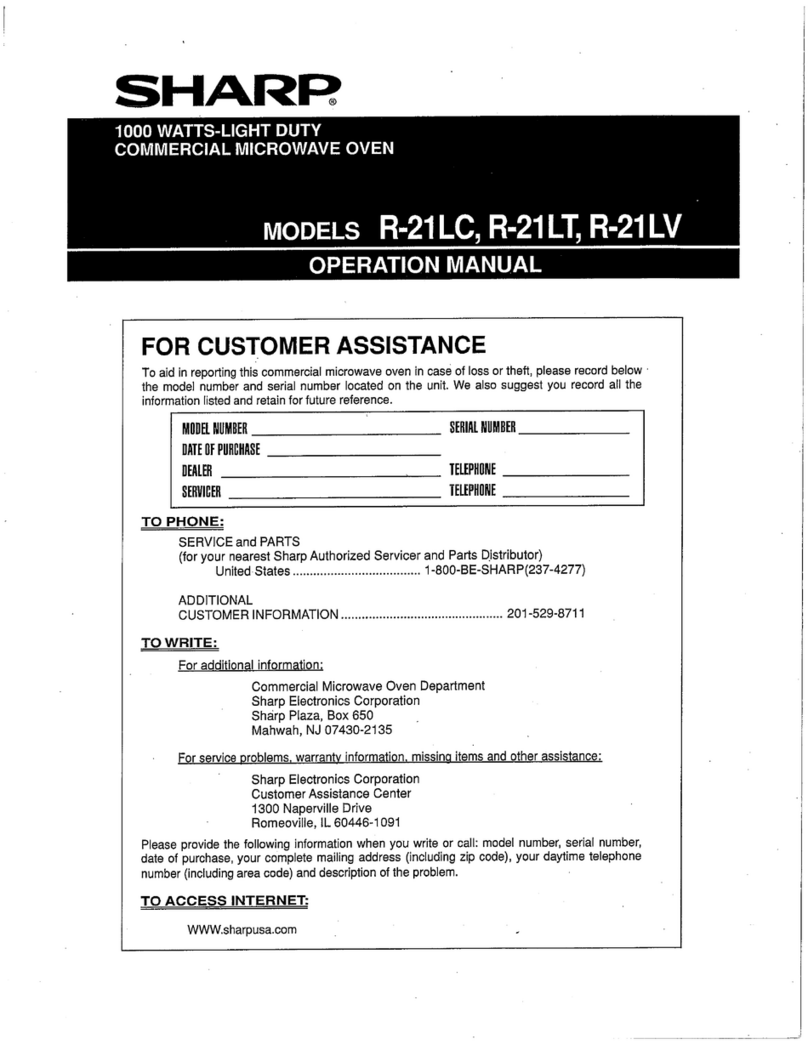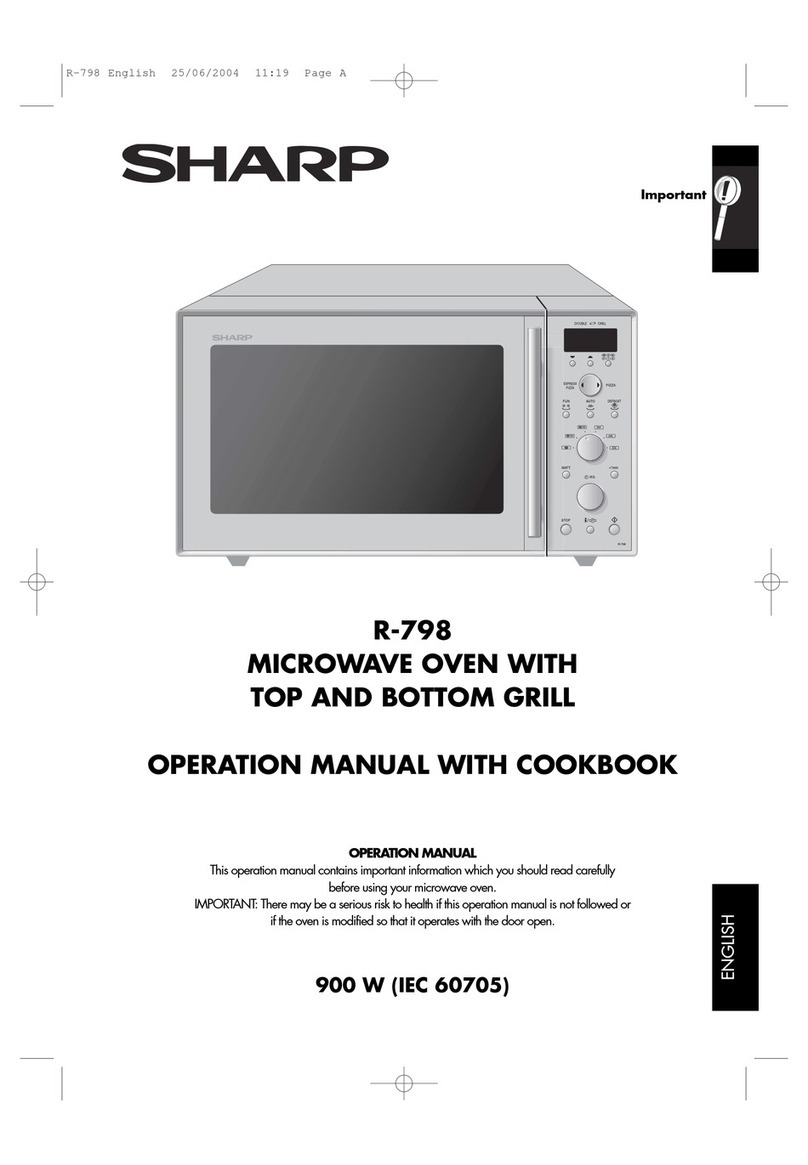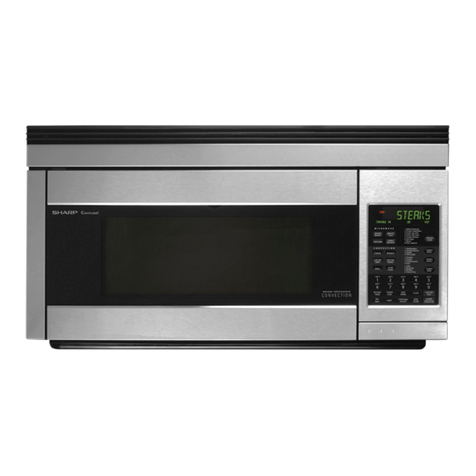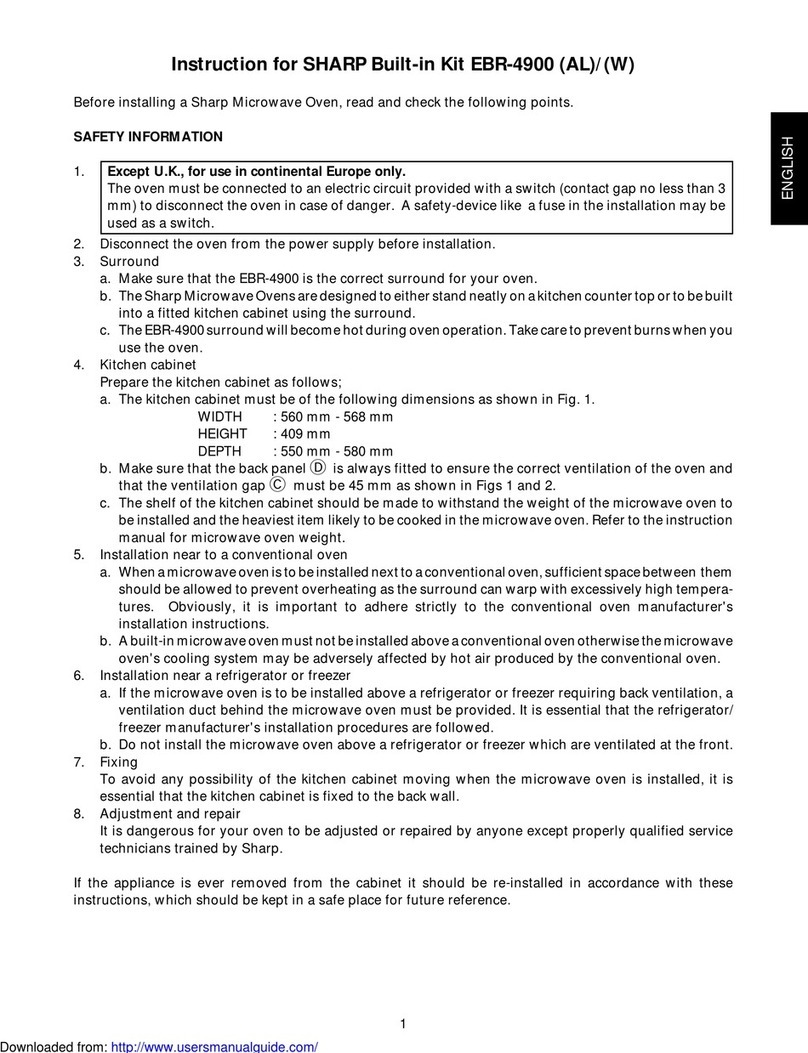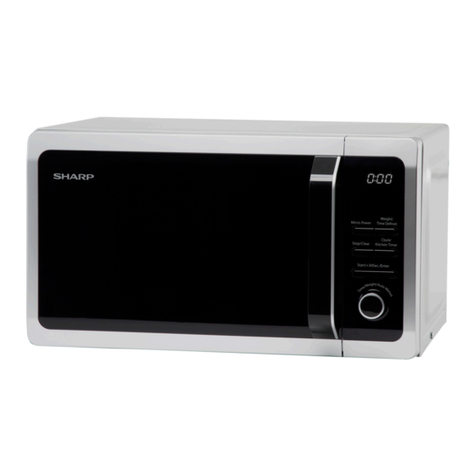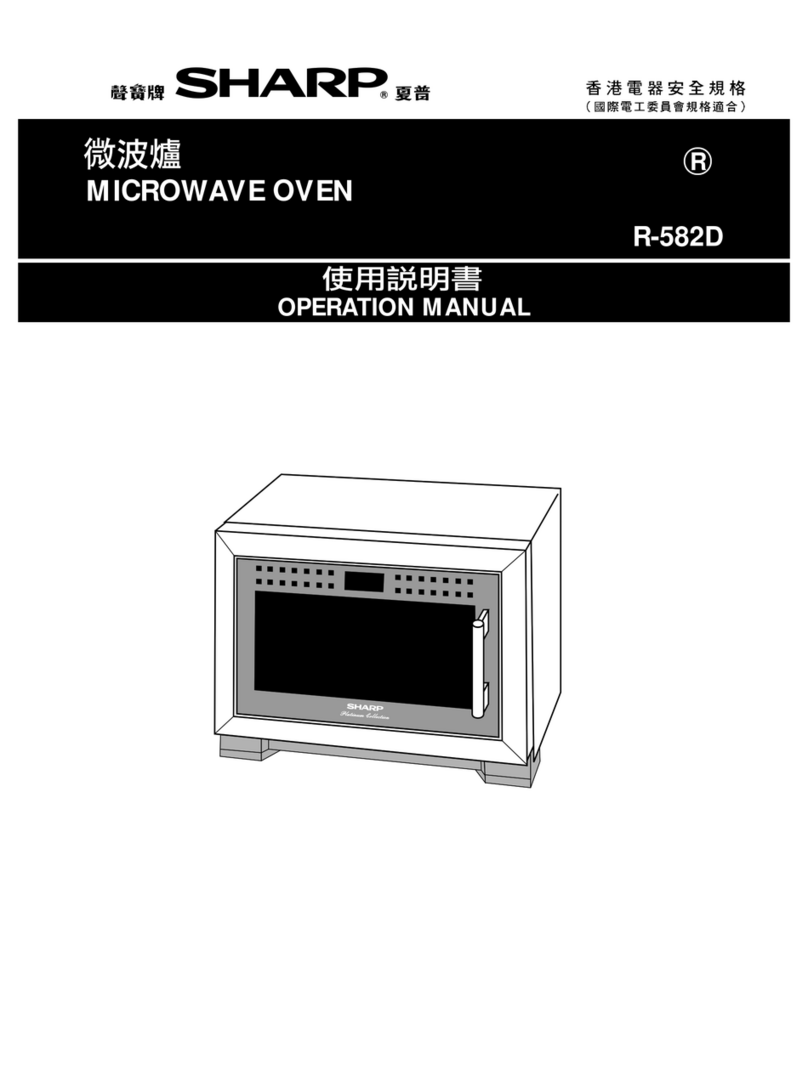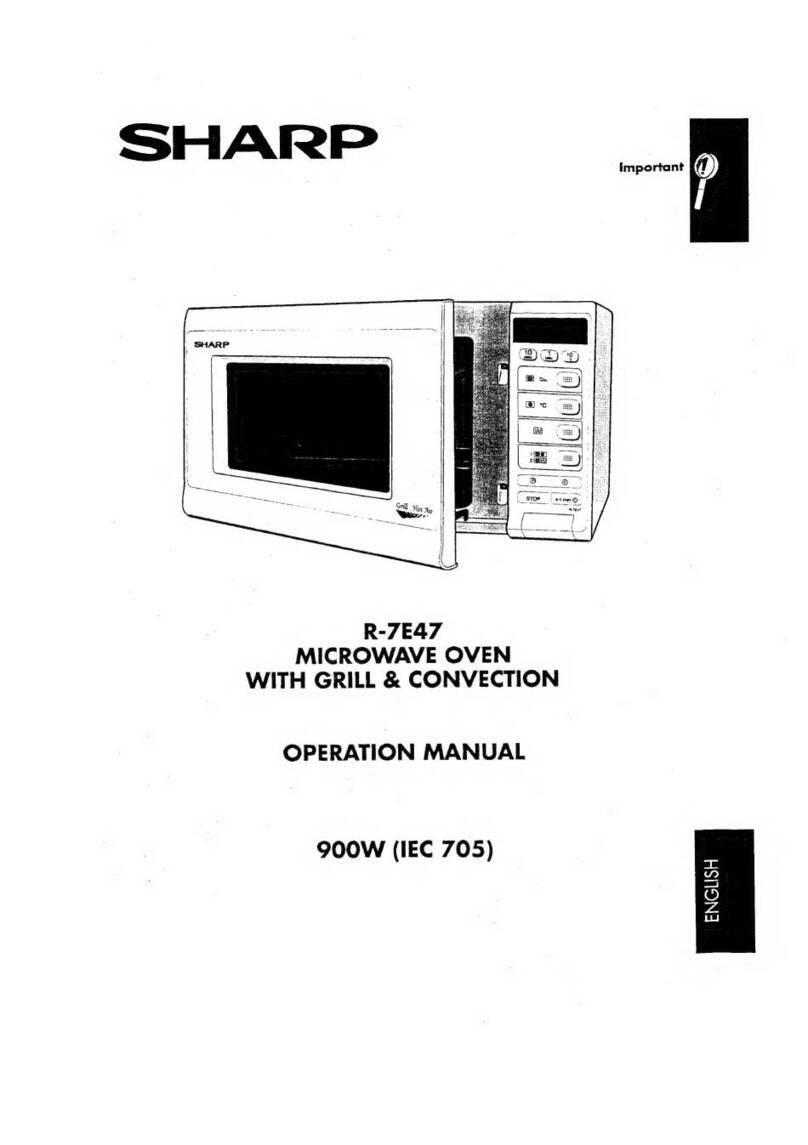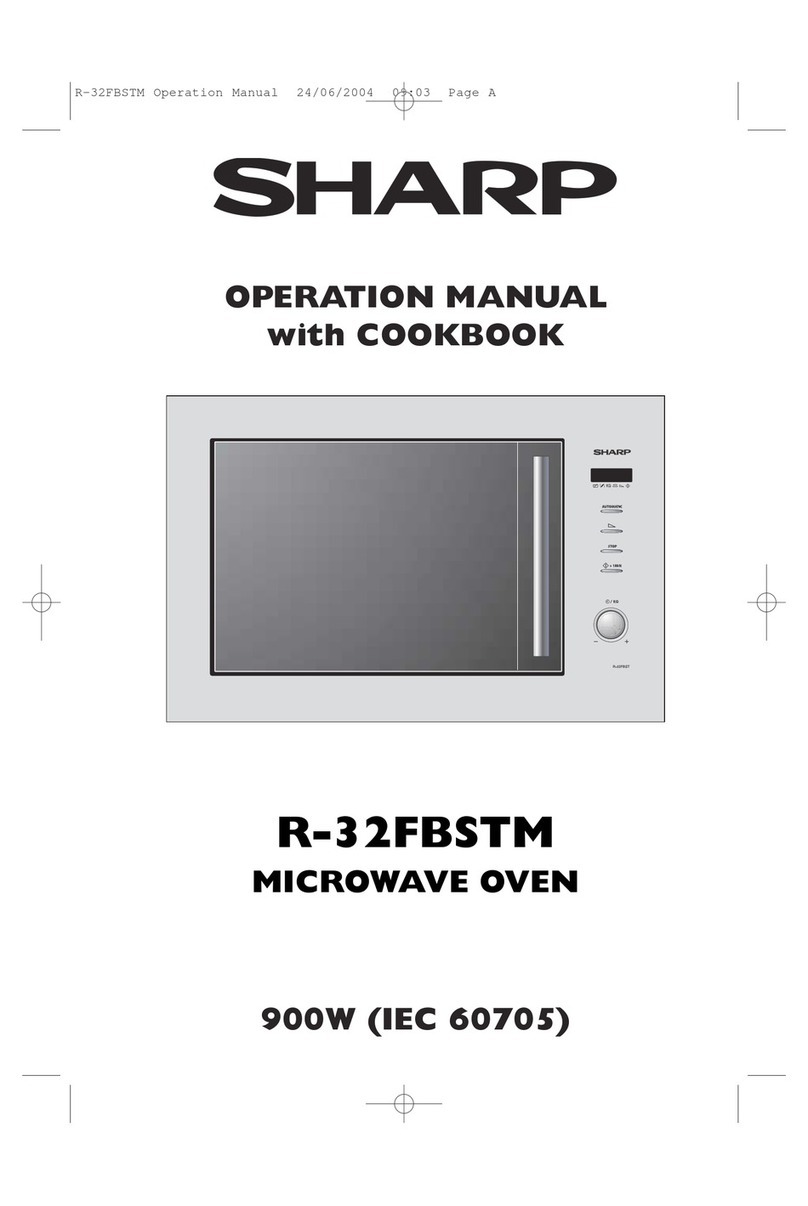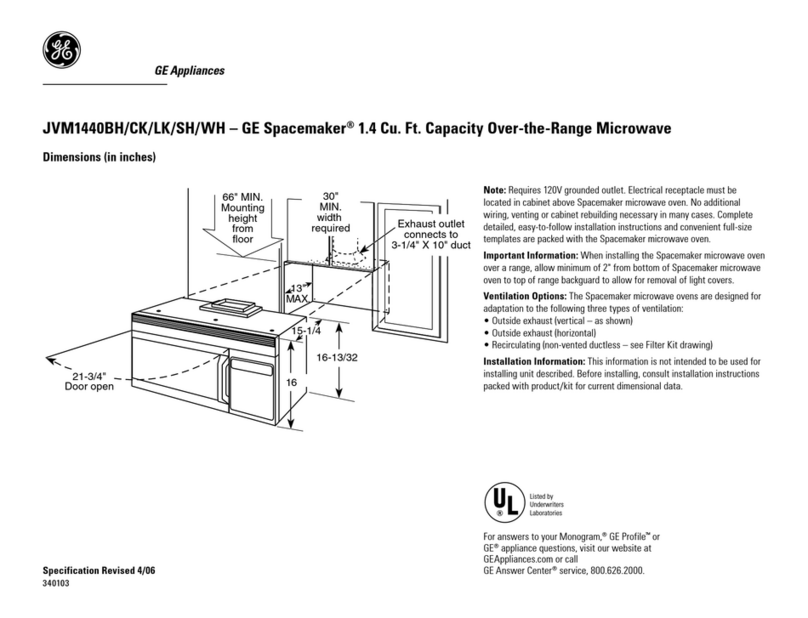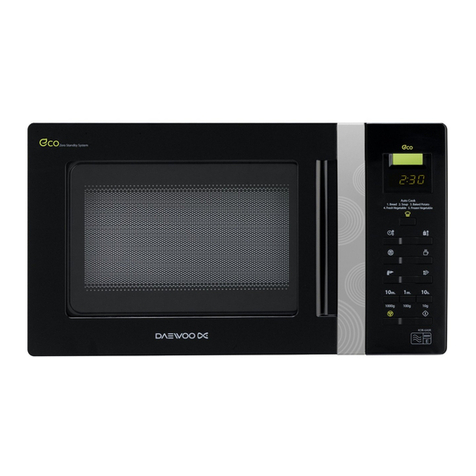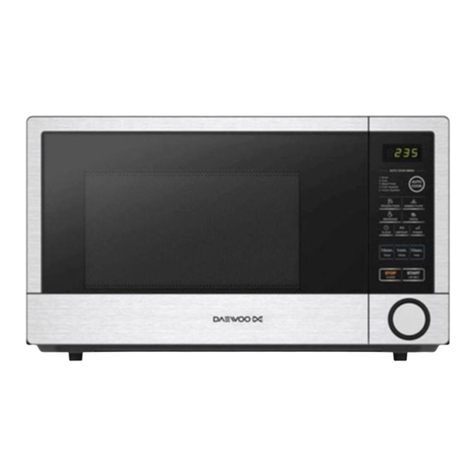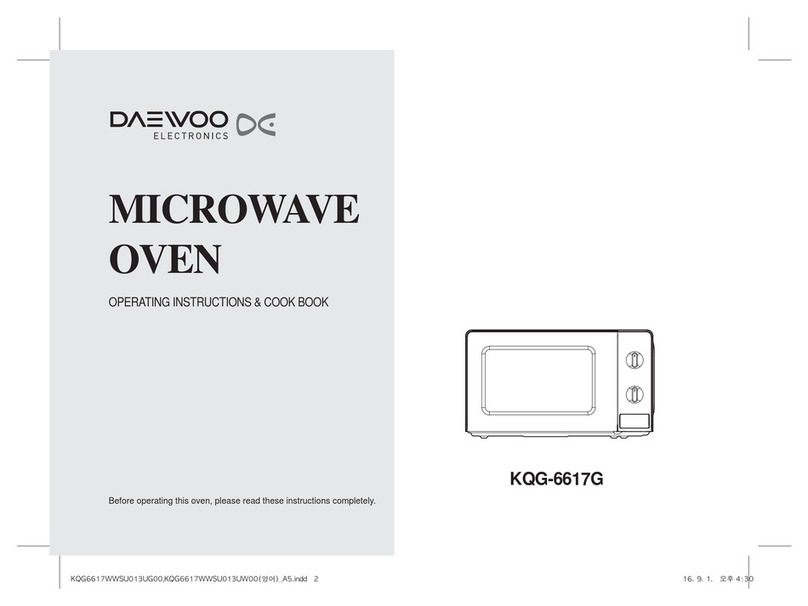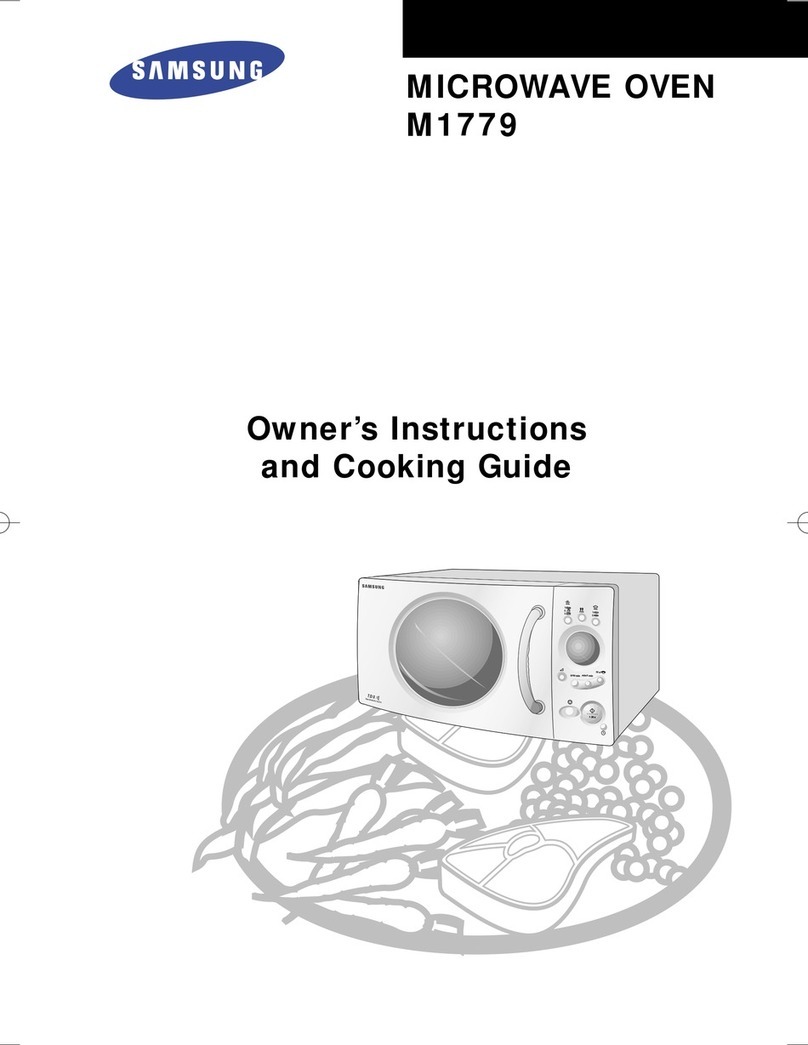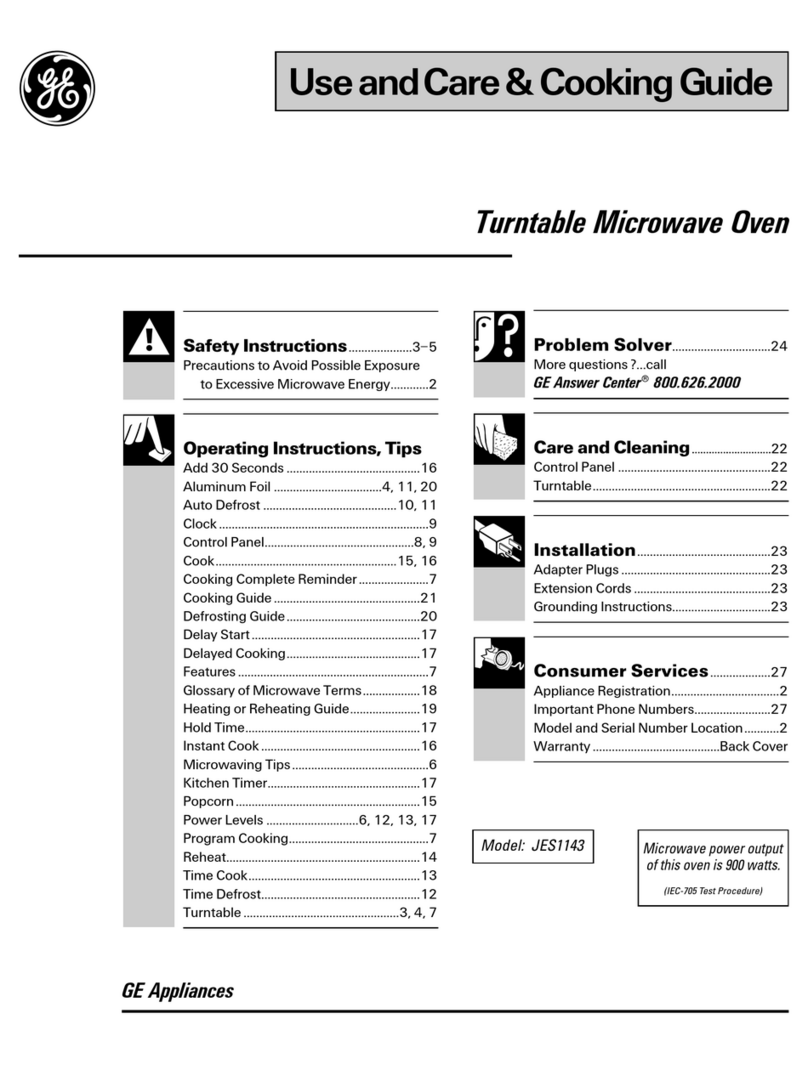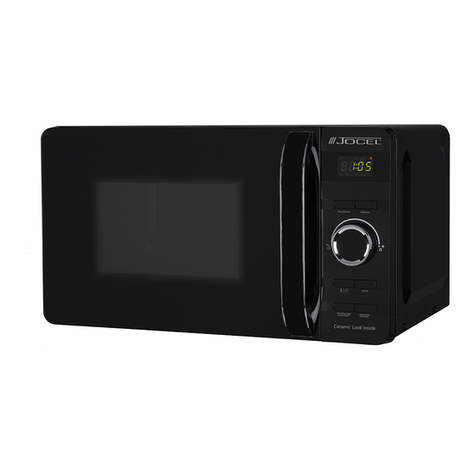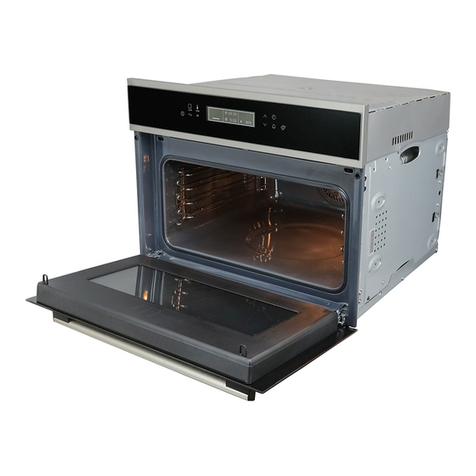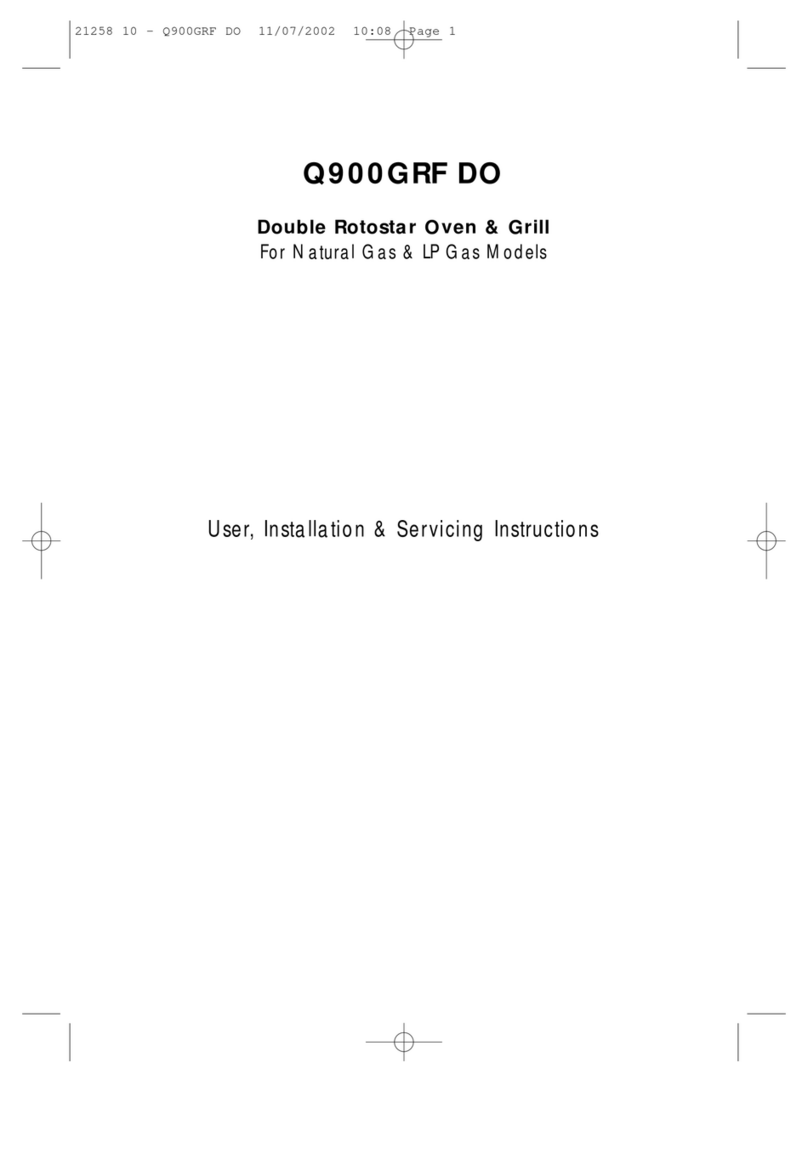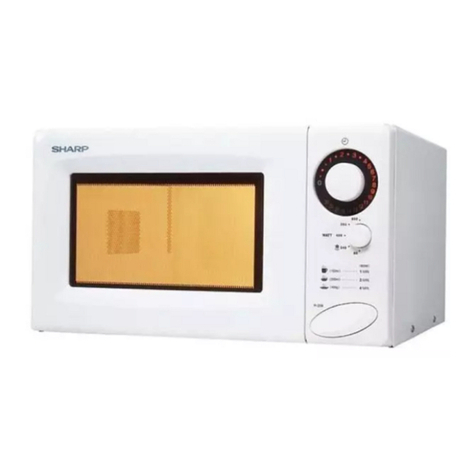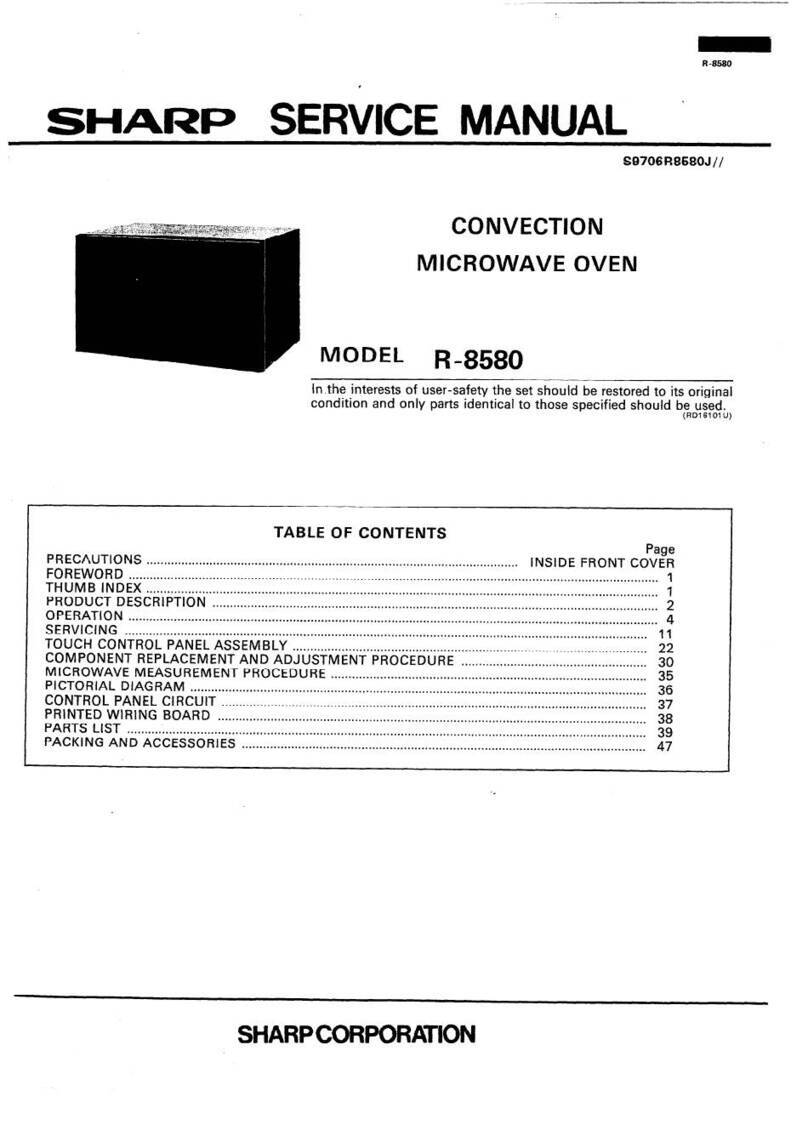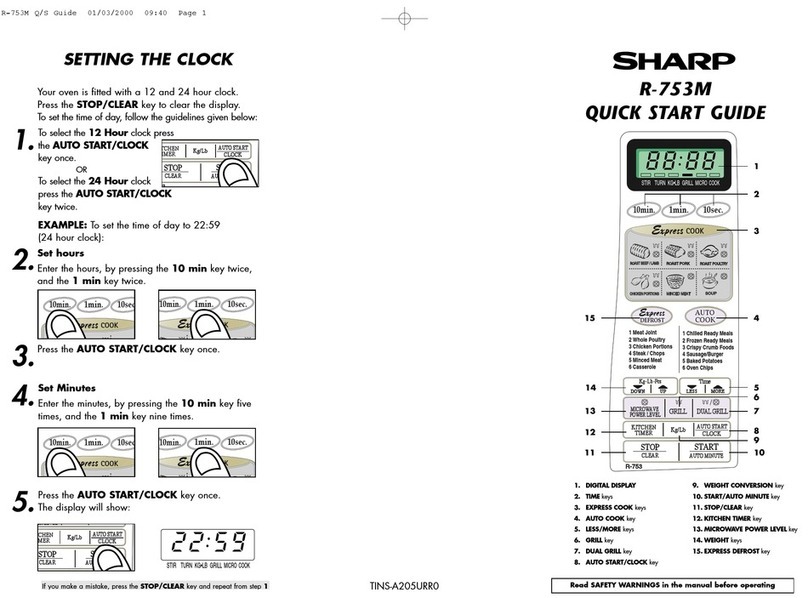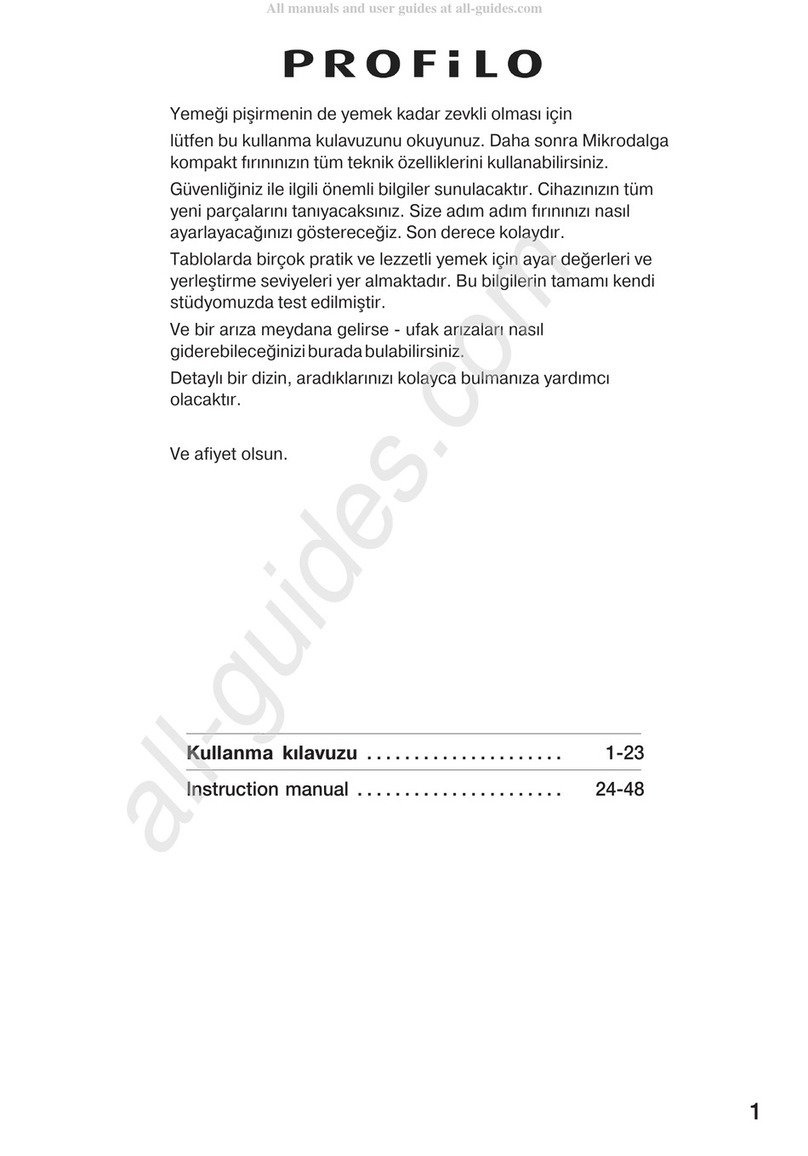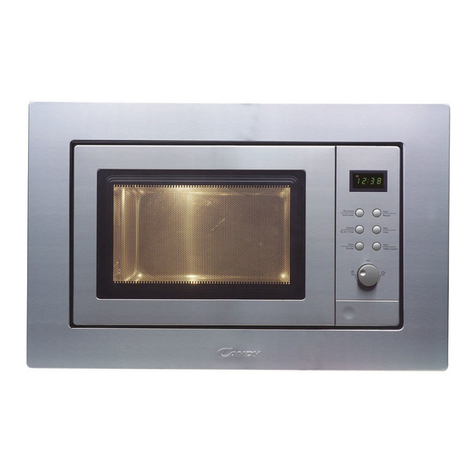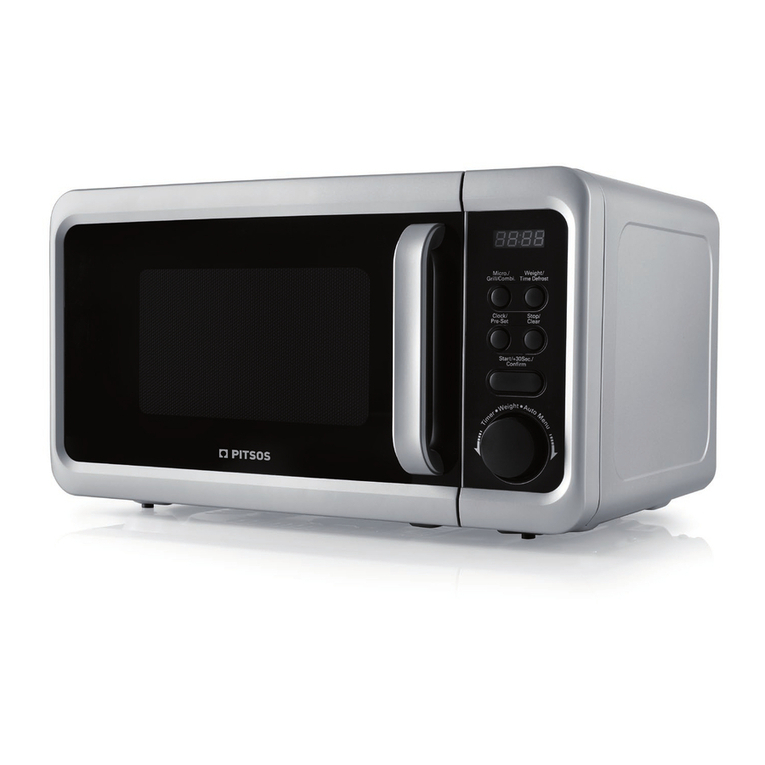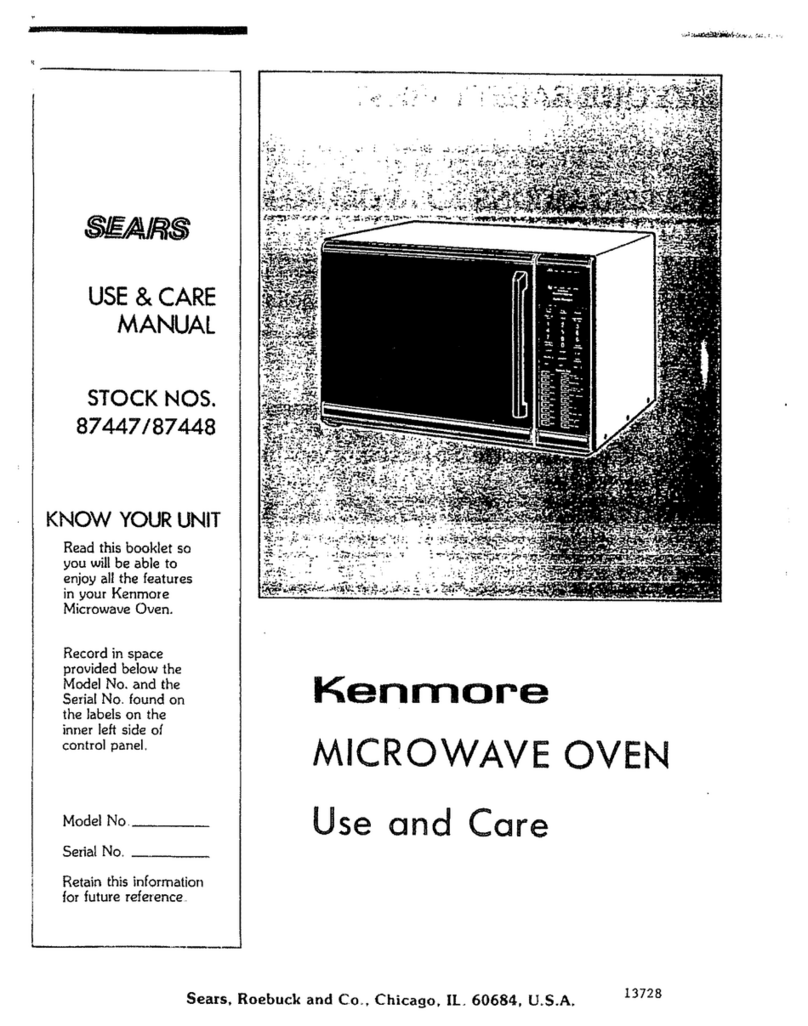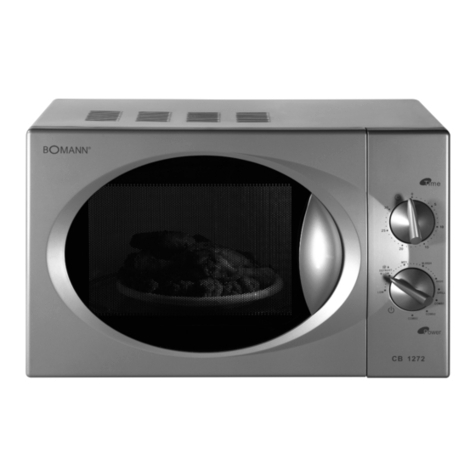
R-995J
5
2. The coil of relay (RY4) is energized by the CPU unit.
The damper is moved to the closed position, opening
the damper switch contacts. The opening of the damper
switch contacts sends a signal to the LSI on the CPU
unit de-energizing the relay (RY4) and opening the
circuit to the damper motor.
3. The coil of heater relay (RY3) is energized by the CPU
unit and the main supply voltage is added to the
convection heater.
4. When the oven temperature reaches the selected
preheat temperature, the following operations occur:
4-1. The heater relay (RY3) is de-energized by the CPU
unit temperature circuit and thermistor, opening the
circuit to the convection heater.
4-2. The oven will continue to function for 30 minutes,
turning the convection heater on and off, as needed
to maintain the selected preheat temperature. The
oven will shut-down completely after 30 minutes.
CONVECTION COOKING CONDITION
When the preheat temperature is reached, a beep signal
will sound indicating that the holding temperature has
been reached in the oven cavity. Open the door and place
the food to be cooked in the oven. Program desired
convection temperature and cooking time by touching the
CONVECTION pad, Temperature pad and number pads.
When the START pad is touched, the following operations
occur:
1. The numbers of the digital read-out start the count
down to zero.
2. The oven lamp, turntable motor, cooling fan motor and
convection motor are energized.
3. Heater relay (RY3) is energized (if the cavity temperature
is lower than the selected temperature) and the main
supply voltage is applied to the convection heater to
return to the selected cooking temperature.
4. Upon completion of the cooking time, the audible
signal will sound, and oven lamp, turntable motor,
cooling fan motor and convection motor are de-
energized. At the end of the convection cycle, if the
cavity air temperature is above 118˚C, the circuit to
(RY6) will be maintained (by the thermistor circuit) to
continue operation of the cooling fan motor until the
temperature drops below 118˚C, at which time the
relay will be de-energized, turning off the fan motor.
Relay (RY5) will however, open as soon as the
convection cycle has ended, turning off the convection
fan motor. This will now cool and allow the damper door
to open.
5. At the end of the convection cook cycle, shut-off relay
(RY4) is energized turning on the damper motor. The
damper is returned to the open position, closing the
damper switch contacts which send a signal to the
control unit, de-energizing shut-off relay (RY4).
MIX COOKING CONDITION
Program desired cooking time and Mix Cooking mode by
touching the LOW MIX or HIGH MIX pad and number
pads. When the START pad is touched, the following
operations occur:
1. The numbers of the digital read-out start the count
down to zero.
2. The shut-off relay (RY1+RY5+RY6) energized, turning
on the oven lamp, turntable motor, cooling fan motor
and convection motor.
3. The shut-off relay (RY4) is energized.
The damper door is closed from the open position.
4. The heater relay (RY3) is energized, adding the mains
supply voltage to the convection heater.
5. Now, the oven is in the convection cooking condition.
6. When the oven temperature reaches the selected
temperature, the following operations occur:
6-1. The power supply voltage is added to the convection
heater and power transformer alternately.
6-2. The convection heater operates through the heater
relay (RY3) contacts and the power transformer
operates through the cook relay (RY2) contacts.
6-3. These are operated by the CPU unit to supply
alternately within a 48 second time base, convection
heat and microwave energy.
The relationship between the convection and microwave
power operations are as follows.
Note: The ON and OFF time ratio does not correspond
with the percentage of microwave power, because
approx. 2 seconds are needed for heating of the
magnetron filament.
Note: During alternate Microwave/Convection operation,
the convection heater is energized only if the
cavity temperature drops below the set
temperature.
AUTOMATIC OPERATIONS
This microwave oven has 4 automatic operations as
follows.
SENSOR INSTANT ACTION
REHEAT SENSOR
INTELLIGENT SENSOR
DEFROST SENSOR
These operations work by using absolute humidity sensor
or weight sensor.
ABSOLUTE HUMIDITY SENSOR (AH SENSOR)
COOKING CONDITION
Incase where the AH sensor is used, the foods are cooked
in microwave cooking mode without figuring time, power
level or quantity. When the oven senses enough steam
from the food, it relays the information to its microproces-
sor which will calculate the remaining cooking time and
power level needed for best results.
When the food is cooked, water vapour is developed. The
16 SEC. 32 SEC.
48 SEC.
LOW MIX
HIGH MIX
MICROWAVE POWER
= APPROX. 30%
CONVECTION
TEMPERATURE
= 200˚C
MICROWAVE POWER
= APPROX. 10%
CONVECTION
TEMPERATURE
= 180˚C
40 SEC.8 SEC.
ON
ON
OFF
OFF
OFF
ON
(MICRO.)
(CONVEC.)
(MICRO.)
(CONVEC.)
